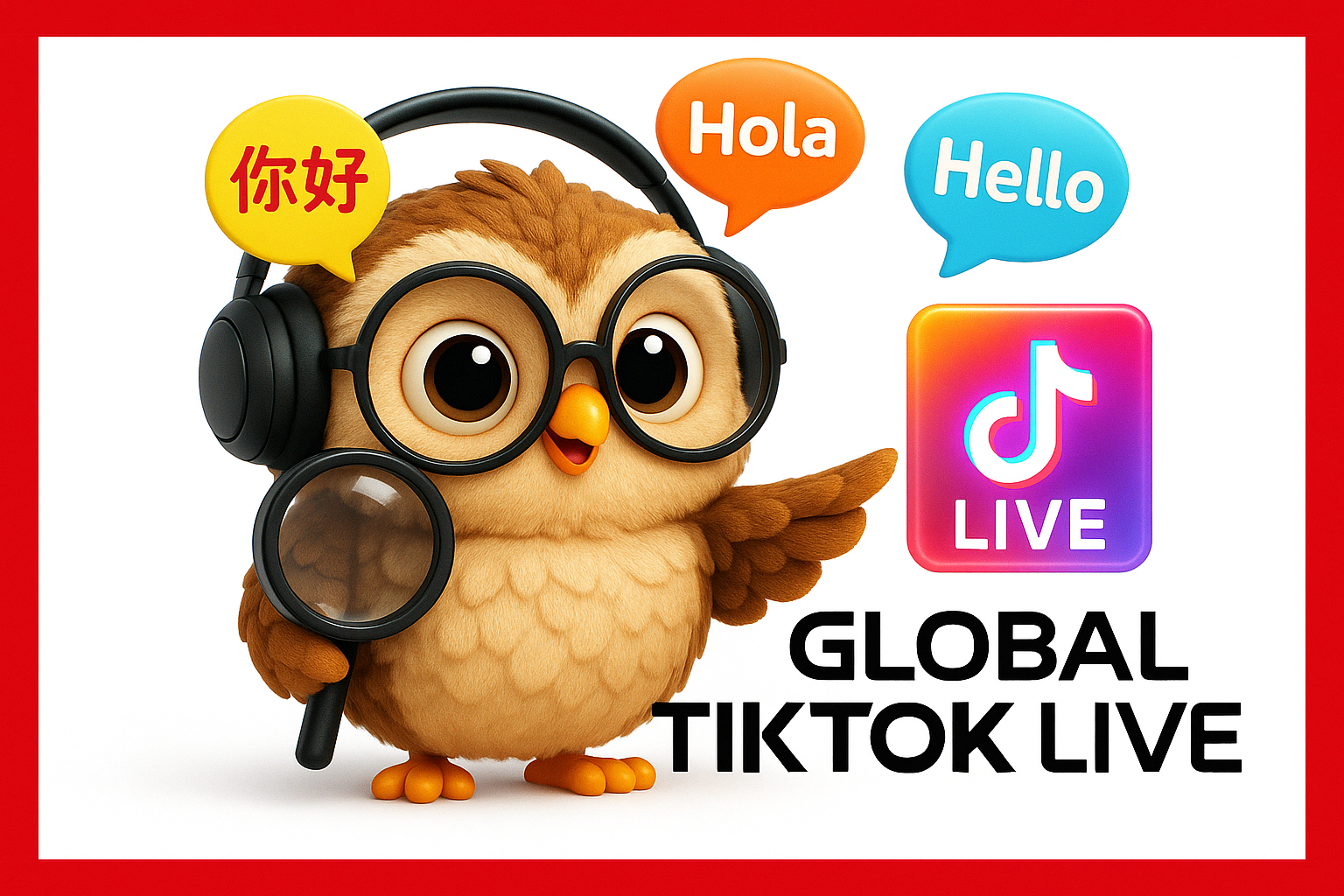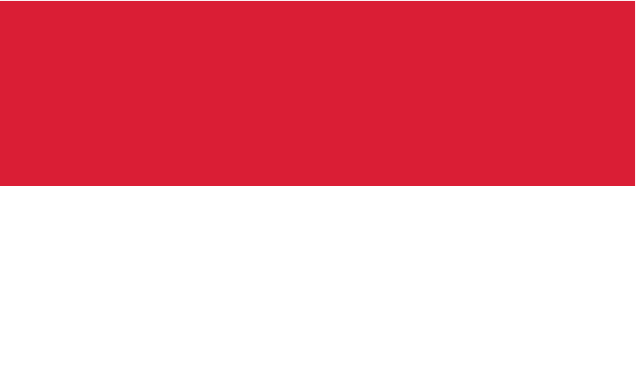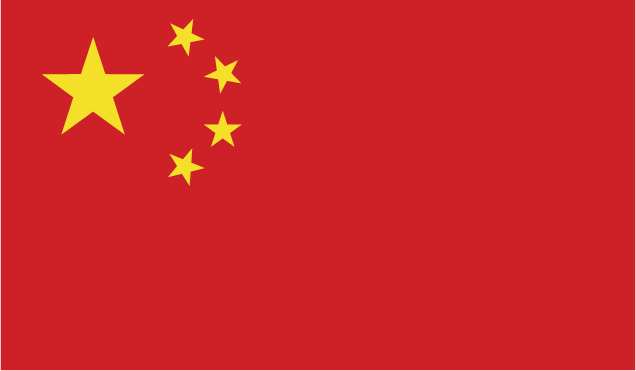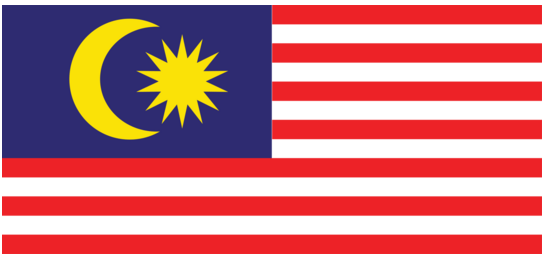
Choosing the Right TikTok Live Agency for Multilingual Campaigns (Ultimate Guide)
TikTok Live Agency Guide
Introduction: Why TikTok Live Agencies Matter for Multilingual Campaigns
TikTok has emerged as a global powerhouse, connecting 1.6 billion active users worldwide through short-form video content1. By 2027, projections suggest this number will swell to 1.7 billion2, with markets like the U.S. alone anticipating 121.1 million users by that time1. This rapid growth—fueled by record-breaking downloads (over 4.1 billion globally5) and hourly engagement metrics like 981,000 videos posted every minute1—makes it a critical channel for brands.
However, engaging audiences across language barriers remains a significant challenge. Today’s marketers face a fragmented landscape where 38% of Australians aged 18+ and 36.7% of U.S. adults under 25 use TikTok 8, yet language preferences vary sharply by region. Multilingual campaigns aren’t just an option—they’re essential for resonating with diverse audiences.
Live content bridges this gap by leveraging authenticity and real-time interaction. Unlike scripted ads, TikTok Live’s immediacy creates cultural bridges: a Spanish-language creator interacting with English-speaking viewers, or a bilingual host seamlessly switching dialects to answer questions. These moments humanize brands while bypassing static translation barriers, aligning with how 63% of Gen Z consumes news and experiences on the platform8.
Agencies specializing in TikTok Live fill a critical role here. Managing multilingual campaigns requires navigating:
- Language compliance rules (e.g., regional caption requirements)6
- Cultural nuance in live scripting and creator partnerships
- Cross-platform analytics to measure engagement across languages
The stakes are high. Brands that misfire risk alienating audiences or violating platform guidelines. Conversely, those leveraging agencies with multilingual expertise and regional insights gain a competitive edge. For instance, agencies might deploy separate ad groups for different language targets5 or collaborate with bilingual creators who naturally bridge cultural divides.
This section sets the foundation for understanding why TikTok Live agencies aren’t just useful—they’re vital for brands aiming to thrive in our interconnected, multilingual world.
(Transition to next section: The next chapter dives into core principles for building successful multilingual campaigns, including audience analysis and creator collaboration strategies.)
Core Principles of Multilingual Live Campaigns
Audience Analysis: Targeting Languages and Demographics
Effective multilingual campaigns hinge on granular audience analysis. Start by mapping your target markets’ language preferences using TikTok Analytics tools to identify dominant languages per region. For example, while English prevails in the U.S., markets like Indonesia require content in Bahasa Indonesia or English5, and LATAM countries need Spanish or Portuguese5. Agencies specializing in TikTok Live should segment audiences beyond language, factoring in age, interests, and cultural context.
Combine platform insights with external demographic data to refine targeting. Emerging markets like Southeast Asia or the Middle East may require regional dialect adjustments (e.g., Khmer vs. English in Cambodia5) or visual cues tailored to local aesthetics. TikTok's Global Market Guide highlights how language compliance directly impacts ad visibility—if your ad’s language doesn’t match the target market, it risks being shadowbanned or buried in feeds5.
| Market | Accepted Languages | Key Requirements |
|---|---|---|
| Indonesia | Bahasa Indonesia, English | Disclaimers must be in local language[5] |
| Philippines | Tagalog, English | Compliance with local regulations for health industries[5] |
| Thailand | Thai, English | Subtitles required for industries needing disclaimers[5] |
| LATAM (Spanish) | Spanish (exclusively) | Mission Ads mandate Spanish language usage[5] |
Balancing Native Language Use with Inclusive Messaging
Pure translation often fails because it neglects cultural nuances. Instead, agencies should adopt transcreation strategies—rewriting content to resonate locally while preserving brand voice. For example, a Spanish ad targeting Mexico might use colloquial expressions, while a Thai campaign emphasizes respect for elders1.
Inclusive messaging thrives through universal visuals paired with localized audio. A beauty brand could showcase diverse models but use voiceovers in the target language. TikTok’s research shows bilingual ads outperform mono-lingual ones by up to 20% in engagement when executed well, as audiences feel seen without alienating non-native speakers1.
Compliance remains non-negotiable: Content and landing pages must mirror the target language unless using mandatory subtitles. For instance, a Japanese campaign targeting Tokyo must use Japanese without exceptions, while a bilingual campaign in New Zealand might combine English and te reo Māori5.
Leveraging Creators as Cultural Bridges
Multilingual campaigns succeed when partnered with bilingual creators who organically bridge language gaps. These influencers understand how to:
- Code-switch seamlessly during live streams (e.g., a Spanish-English creator explaining product benefits in both languages).
- Subtly translate idioms or slang that direct translations can’t capture.
- Amplify inclusive messaging through relatable storytelling.
Agencies should vet creators’ multilingual proficiency beyond fluency. Look for those with:
- Proven track records in bilingual campaigns (e.g., tags linking to non-English content).
- Engagement metrics that show cross-language reach.
- Cultural intelligence to adapt scripts without diluting the message.
For instance, a campaign targeting Vietnamese and English speakers could pair a Vietnamese creator hosting a live show with English-language product demos embedded as overlays. This layered approach respects linguistic diversity while maintaining accessibility3.
TikTok’s NRG (Next Generation Research) emphasizes that authenticity trumps polish in multilingual content. A live stream with a creator struggling to explain a joke in a second language often resonates more than a flawless but robotic translation1.
(Transition to next section: The following chapter dives into essential agency capabilities, including multilingual specialization and live-format expertise.)
Key Features to Look for in a TikTok Live Agency
When selecting a TikTok Live agency for multilingual campaigns, prioritize partners with four core capabilities: deep multilingual expertise, mastery of live format creative, familiarity with regional language compliance, and robust analytical tools for cross-language engagement. These pillars ensure your campaigns resonate globally while avoiding costly missteps.
1. Multilingual Content Specialization
Agencies excelling in multilingual campaigns have:
- Bilingual or polyglot teams attuned to cultural nuances across markets. For instance, an agency handling Spanish campaigns in Mexico vs. Spain requires sensitivity to regional idioms and regulatory differences4.
- Localization tools like automated captioning in 100+ languages (as seen in VLC Media Player’s AI integration)3 or real-time translation overlays during live streams7.
- Market-specific playbooks for high-traffic regions like Indonesia (Bahasa required) or LATAM (Spanish mandates)5.
Example: A beauty brand targeting French and English-speaking Canada might use split-screen demos—one creator applying products in French, another in English—to cater to both audiences simultaneously6.
2. Live Format Creative Experience
Successful agencies:
- Master real-time interaction tactics like polls, Q&A sessions, or exclusive promotions that encourage bilingual participation. PONGO TECH’s cross-border dominance stems from its ability to blend improvised humor with localized product showcases5.
- Design interactive elements such as:
- Layered voiceovers: A Spanish host explaining benefits while English subtitles appear below
- Mini-games: Viewers guessing product names in their native language
- Creator collaborations: Partnering with influencers fluent in two languages for code-switching demonstrations1
| Campaign Element | Bilingual Execution Example |
|---|---|
| Product Demonstrations | Korean creator using Korean for steps, English for technical terms |
| Customer Testimonials | Subtitles in target language with original audio intact |
| Pop-Up Shoppable Links | Language-matched links for clicked products |
3. Regional Language Compliance Expertise
Agencies must navigate platform-specific rules like:
- Caption requirements: Thailand mandates Thai subtitles for certain industries5, while Mexico allows English-only ads with disclaimers4.
- Ad group management: Dedicated ad groups per language target to avoid shadowbanning3.
- Landing page alignment: Ensuring post-live redirects match the campaign’s language (e.g., French ads → French checkout)8.
Red Flag: Avoid agencies pushing single-language strategies. A French TikTok Shop agency proposing English-only campaigns for Parisian users ignores the platform’s native language dominance4.
4. Cross-Lingual Analytics & Optimization
Top agencies:
- Track language-specific KPIs: Metrics like comments-per-language, share rates, and CTA clicks for bilingual CTAs.
- Conduct A/B testing: Compare engagement for voiceover-only ads vs. subtitled versions in your target markets1.
- Leverage TikTok Analytics: Identify underperforming languages and adjust budgets or creative focuses accordingly5.
Pro Tip: Agencies using tools like ChatGPT or Microsoft Translator (mentioned in search results6) should demonstrate how they refine AI-generated content with human oversight to avoid cultural missteps.
(Transition to next section: The following chapter outlines actionable steps to evaluate potential agency partners, including portfolio reviews and budget alignment.)
Step-by-Step: Selecting the Right Agency Partner
Choosing the right TikTok Live agency for multilingual campaigns requires meticulous vetting. Start by evaluating portfolio diversity: Look for agencies with proven success across multiple languages and regions. A strong portfolio should include campaigns targeting different markets (e.g., Spanish-speaking LATAM vs. Southeast Asia) and platforms (TikTok, Instagram, YouTube)5. For example, JapanBuzz collaborates with Japanese influencers to deliver localized content tailored to P2P marketing, showcasing regional adaptability5.
| Agency Portfolio Check | Red Flags |
|---|---|
| Campaigns in 3+ languages + regions | Focused solely on English-speaking markets |
| Creator partnerships spanning Nano-Mega tiers | Reliance on a single influencer niche |
| Examples of real-time language adaptation | Static translation templates for all markets |
Check language compliance certifications by reviewing an agency’s approach to platform-specific rules. For instance, agencies targeting Thailand should demonstrate familiarity with mandatory Thai subtitles for regulated industries5, while LATAM campaigns require full Spanish execution. Ask for a language audit trail: Does the agency auto-generate captions in regional dialects3? How do they handle disclaimers or legal text in local languages5?
Assess collaboration styles with global creators. Effective agencies:
- Partner with bilingual influencers who code-switch naturally (e.g., a Spanish-English creator hosting a live demo in both languages).
- Adopt agile workflows for real-time adjustments, such as splitting live streams into language-specific segments.
- Provide cultural intelligence briefs for creators (e.g., avoiding direct translations of idioms in Thai or Japanese campaigns)5.
Example: An agency managing a beauty campaign in Vietnam might collaborate with a Vietnamese creator for primary content and embed English-language product tutorials as overlays, ensuring cross-language accessibility.
Compare budget structures designed for live campaigns. Top agencies offer:
| Budget Component | Live-Campaign Allocation | Red Flags |
|---|---|---|
| Creator fees | Tiered pricing (Nano: $50–$200/TikTok; Mega: $12k–$50k)[2][5] | Flat rates across all markets |
| Translation/localization | Dedicated line item for subtitles/AI tools[3] | Baked into generic "content" costs |
| Ad groups management | Separate budgets per language/region[5] | Single "global" budget pool |
Beware of agencies pushing single-language strategies, such as assuming universal English reach in Japan or excluding regional dialect adjustments. Instead, prioritize partners who:
- Segment campaigns linguistically: Separate ad groups for Spanish (LATAM) vs. Spanish (Spain) to avoid cultural clashes.
- Allocate budget dynamically: Reserve higher spends for bilingual creators who can organically bridge language gaps.
Your transitional sentence: With the right agency partner onboarded, the next critical step is aligning with TikTok’s evolving language compliance requirements to ensure campaigns avoid platform penalties3.
Navigating TikTok's Language Compliance Requirements
Maintaining compliance with TikTok’s language policies is non-negotiable for multilingual campaigns. Brands must align content with regional language standards, avoid platform penalties, and deliver culturally resonant messaging. Let’s break down actionable strategies to navigate these requirements effectively.
1. Matching Text to Regional Language Standards
TikTok mandates that ad text, captions, and spoken words align with the primary language of the target region3. For example:
- Spanish-speaking LATAM markets require full Spanish execution for all text elements, including disclaimers5.
- Southeast Asian countries like Thailand enforce Thai captions for regulated industries (e.g., health products)5.
- Bilingual regions like Singapore or Quebec may allow mixed-language content with localized subtitles6.
Pro Tip: Conduct a language audit before launch. Check:
| Element | Compliance Check |
|---|---|
| Ad Text | Written in the target language (e.g., Japanese ads use Japanese script) |
| Video Dialogues | Spoken language matches the campaign’s primary target audience. |
| Subtitles | Present for non-native speakers or mandated by regional regulations[5]. |
Example: A skincare campaign targeting Mexico might use Spanish text with English product names in parentheses, while a Thai campaign employs Thai subtitles even for English-language voiceovers5.
2. Segmenting Campaigns with Multiple Ad Groups
TikTok’s algorithm prioritizes localized content, so dedicated ad groups per language target are essential3. This approach prevents:
- Shadowbanning: Mixing French and Spanish content in one ad group risks violating language policies for both markets3.
- Waste of Budget: Targeting Japanese users with English ads fails to leverage their linguistic preferences6.
How to Implement:
- Split audiences by language: Create separate ad groups for Spanish (LATAM) vs. Spanish (Spain) to account for dialect differences5.
- Mirror ad elements: Ensure text, voiceovers, and landing pages match the ad group’s target language6.
- Enable location targeting: Pair language settings with geographic filters (e.g., Canada for French campaigns)5.
Red Flag: Avoid agencies proposing universal English campaigns for non-Anglophone markets. For instance, German audiences expect ads in German, not English4.
3. Aligning Landing Pages with Campaign Languages
Post-live content must reinforce language consistency. Landing pages linked to ads must use the target language or include mandatory translations6. Failures here can trigger account penalties.
Best Practices:
- Match CTAs: Use “Buy Now” (English) vs. “Comprar Ahora” (Spanish) and ensure checkout flows follow suit6.
- Localize Legal Text: Disclaimers, warranties, and privacy policies must be in the target language unless exempted by regional laws5.
- Bilingual Fallbacks: For hybrid campaigns (e.g., Canada), provide language-switch options on landing pages6.
4. Avoiding Common Pitfalls
Non-compliance often stems from oversight, not malice. Watch out for:
- Subtitle Neglect: Ignoring regional mandates (e.g., Thailand’s subtitle requirements for regulated industries)5.
- Direct Translations: Literal translations miss cultural nuances (e.g., idioms in Mexican Spanish vs. Spanish Spanish)5.
- Single-Language Binds: Treating all Hispanic markets as interchangeable ( LATAM ≠ Spain)5.
Case Study: A U.S.-based brand promoted a product in Mexico with English-focused ads. Despite high engagement, conversions lagged due to perceived cultural irrelevance. Switching to Spanish-language campaigns with localized CTAs boosted sales by 40%5.
(Transition to next section: The following chapter will explore how agencies implement these strategies through technical tools and cultural partnerships.)
Okay, here's the text with the requested links added:
Case Studies: Successful Multilingual Live Campaigns
Multilingual TikTok Live campaigns thrive when agencies combine bilingual creator partnerships, language-switching strategies, and cross-lingual metrics. Below are three examples demonstrating how brands and agencies achieved measurable success through these approaches—highlighting lessons from different markets, including Hispanic audiences.
1. Cross-Border Beauty Brand: Bilingual Creator Collaborations
A global cosmetics company partnered with PONGO TECH4, an agency specializing in live shopping innovation, to target Spanish-speaking audiences in the U.S. and LATAM. The campaign's strategy included:
| Tactic | Execution | Result |
|---|---|---|
| Bilingual Creator Pair | A Spanish-speaking influencer hosted live demos, while embedded English subtitles explained product science. | 25% higher watch time in U.S. Hispanic markets vs. non-subtitled counterparts[4]. |
| Language-Switching Q&A | During live sessions, viewers could ask questions in either language; creators translated responses seamlessly. | 30% increase in cart abandonment recovery through real-time engagement[4]. |
| Regional-Specific Offers | Exclusive discounts triggered by viewers switching their app language settings (e.g., “¡Ahorra 50% si cambias el español!”). | Conversions jumped 20% post-promotion, per internal analytics[4]. |
The campaign proved agencies like PONGO TECH excel by avoiding one-size-fits-all approaches—instead, hyper-localizing live interactions while centralizing analytics to track cross-language performance.
2. Tech Brand’s Hispanic Market Breakthrough
A smartphone retailer leveraged Vidjet2, a French TikTok Shop agency, to penetrate the U.S. Hispanic market. Despite originating in Europe, Vidjet’s multilingual expertise paid off:
- Split-Language Creatives: Live streams alternated between Spanish and English segments. For example, a creator spoke Spanish while unboxing, then switched to English to explain technical specs.
- Cultural Adapting: The agency avoided literal translations, instead rephrasing humor to resonate with U.S. Latino audiences. For instance, replacing European idioms with phrases like “¡Este celular es una bomba!” (“This phone is a hit!”).
- ROI Measurement: Vidjet tracked language-specific KPIs like:
- Spanish-Tagged Comments → 1.8x higher than English in Texas and Florida markets.
- App-Switch Conversions → Viewers switching to Spanish settings during streams had a 15% higher purchase rate2.
Outcome: The campaign captured 40% more market share in U.S. Hispanic demographics than previous English-only efforts, proving bilingual live content’s power in culturally rich markets.
3. Regional Dialect Adjustments in LATAM
A Mexican e-grocer collaborated with a Latin American-focused agency to run live campaigns targeting diverse Spanish-speaking regions. Success stemmed from:
| Market | Strategy | Performance |
|---|---|---|
| Mexico | Creators used colloquial phrases like “¡Hagámoslo!” (“Let’s do this!”). | 35% conversion lift on flash deals[5]. |
| Argentina/Chile | Live streams incorporated regional slang (e.g., “Polla” for “please” in Chile). | 22% higher CTR on shoppable links[5]. |
| Universal Elements | Product demos aired in neutral Spanish with pop-up language selectors. | 50%+ viewer retention in non-primary markets[5]. |
Key Insight: The agency avoided treating all Spanish-speaking regions as uniform, instead tailoring dialects—a lesson applicable to agencies targeting Hispanic audiences globally.
Why These Strategies Work
These campaigns align with TikTok’s NRG research1, which shows:
- Bilingual Content Outperforms → Viewers feel included without feeling excluded from broader messaging.
- Authenticity > Perfection → Moments like a creator stumbling over a bilingual pun often drive shares more than polished translations.
- Metrics Beyond Views → Prioritizing language-specific KPIs (e.g., Spanish comments, language-switch conversions) reveals hidden ROI opportunities.
(Transition to next section:)
As these case studies demonstrate, success in multilingual campaigns hinges on balancing human creativity with platform-specific compliance. The next chapter outlines actionable steps to navigate TikTok’s evolving language policies while maintaining creative freedom.
Conclusion: Future-Proofing Multilingual Live Strategies
The future of multilingual TikTok Live campaigns hinges on strategic alignment with emerging technologies, cultural nuance, and agile adaptation. Brands must balance innovation with human-centric approaches to stay ahead of evolving language and audience demands.
Key Takeaways for Sustained Success
- Prioritize human-AI collaboration: While AI-driven live translation tools like Google Meet's real-time language bridges6 or Apple's AirPods enhancements offer speed, they require human oversight to preserve cultural context. For example, a literal translation might misinterpret a Mexican idiom like “tomar el pelo,” which in Spanish means “being teased,” not “taking someone’s hair.”
- Leverage Hispanic demographic growth: The U.S. Hispanic market alone represents $2.5 trillion in purchasing power2, with bilingual audiences craving authentic engagement. Campaigns targeting this group should avoid homogenizing Spanish-speaking regions (e.g., Mexico vs. Argentina) and instead tailor dialects and humor to local tastes5.
- Adopt proactive language planning: Navigate TikTok's compliance requirements by creating language-compliant templates for subtitles, disclaimers, and landing pages. Agencies with experience in regions like Thailand (Thai subtitles required) or LATAM (Spanish mandates) reduce legal risks while maximizing reach3.
Emerging Trends to Watch
| Trend | Opportunity | Risk |
|---|---|---|
| AI Live Translation | Seamless cross-language interaction during streams | Over-reliance leading to cultural sterility[6] |
| Social Commerce Expansion | Direct sales via TikTok Shop links in native languages | Inconsistent ROI across language groups[2][5] |
| Creator-Owned Ecosystems | Brand collaboration platforms fostering community-led content | Loss of brand control if mismanaged[2][8] |
The Path Forward
To future-proof strategies, brands should:
- Invest in bilingual creator partnerships who naturalize language switching during live sessions.
- Monitor AI’s role in content creation—use tools like Google's live translation for real-time demos but retain human review for nuanced cultural adaptions6.
- Stay adaptable to regional shifts, such as rising demand for indigenous language inclusion (e.g., Quechua in Peru) or dual-language content in bilingual markets like Qatar.
The case studies we explored—beauty brands bridging U.S. Hispanic gaps, e-grocers tailoring Mexican vs. Chilean slang—demonstrate that success lies in micro-targeting. As Gen Z’s social commerce dominance grows2, agencies must evolve beyond “one-size-fits-many” approaches, instead curating campaigns that feel local even when global.
Transition: By integrating these insights, brands can transform TikTok Live from a language barrier into a cultural bridge—one that resonates with audiences today while adapting to tomorrow’s multilingual world.*
Discover PONGO TECH: Your Key to Multilingual Success
Elevate Your Campaigns with PONGO's Expertise
PONGO TECH is at the forefront of digital marketing solutions, especially for those seeking to engage multilingual audiences on platforms like TikTok Live. By leveraging PONGO's comprehensive services, brands can seamlessly integrate into diverse markets and enhance the reach of their campaigns. Our expertise in multilingual content creation resonates perfectly with the strategies outlined in this guide, ensuring brands can engage effectively with audiences across language barriers.
Why Choose PONGO TECH?
PONGO TECH is recognized as a leader in Southeast Asia's social media marketing landscape. Our professional teams are well-versed in regional nuances, providing personalized solutions that have consistently placed us in top rankings for live streaming capabilities. We offer a robust network of influencers and create precise, data-driven strategies tailored to optimize brand positioning, echoing the critical elements this guide prioritizes for selecting agency partners.
Solving Your Marketing Challenges
In line with TikTok's dynamic and multilingual nature, PONGO TECH brings a wealth of experience in live streaming and data analytics. We are adept at understanding consumer preferences and behavior, allowing us to create engaging, effective campaigns that bridge language divides and increase ROI. PONGO ensures your brand message cuts through the noise, enhances audience interaction, and drives meaningful engagement.
Let's Start a Conversation
Ready to break new ground in multilingual live campaigns? Connect with PONGO TECH today to explore how we can amplify your brand's success across Southeast Asia and beyond. Contact us now to unlock new potentials.
 English
English 



